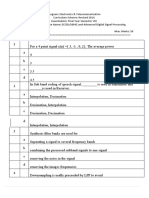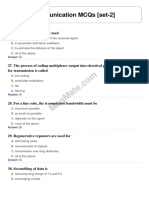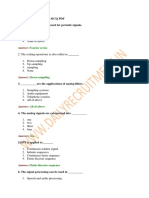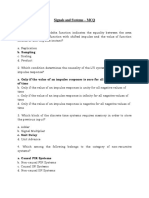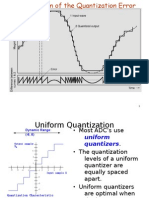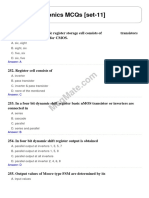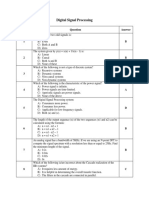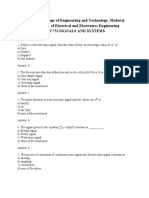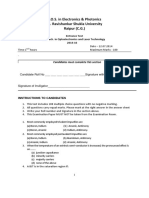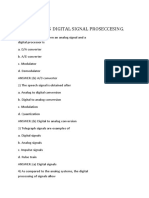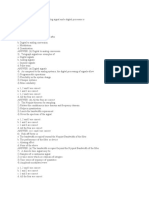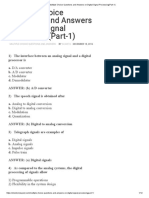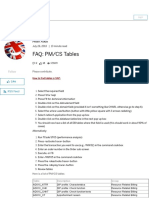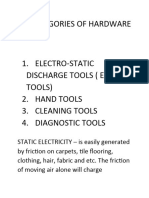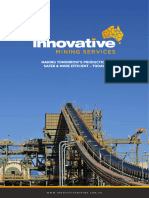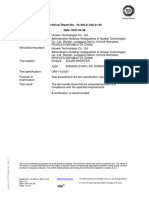0% found this document useful (0 votes)
321 views8 pagesDSP MCQ
The document contains a series of multiple choice questions related to digital signal processing concepts. Some of the key topics covered include: analog to digital conversion, sampling theory, discrete time signals, the discrete Fourier transform (DFT) and fast Fourier transform (FFT), z-transforms, and digital filter design.
Uploaded by
Suresh RoyCopyright
© © All Rights Reserved
We take content rights seriously. If you suspect this is your content, claim it here.
Available Formats
Download as PDF, TXT or read online on Scribd
0% found this document useful (0 votes)
321 views8 pagesDSP MCQ
The document contains a series of multiple choice questions related to digital signal processing concepts. Some of the key topics covered include: analog to digital conversion, sampling theory, discrete time signals, the discrete Fourier transform (DFT) and fast Fourier transform (FFT), z-transforms, and digital filter design.
Uploaded by
Suresh RoyCopyright
© © All Rights Reserved
We take content rights seriously. If you suspect this is your content, claim it here.
Available Formats
Download as PDF, TXT or read online on Scribd
/ 8

